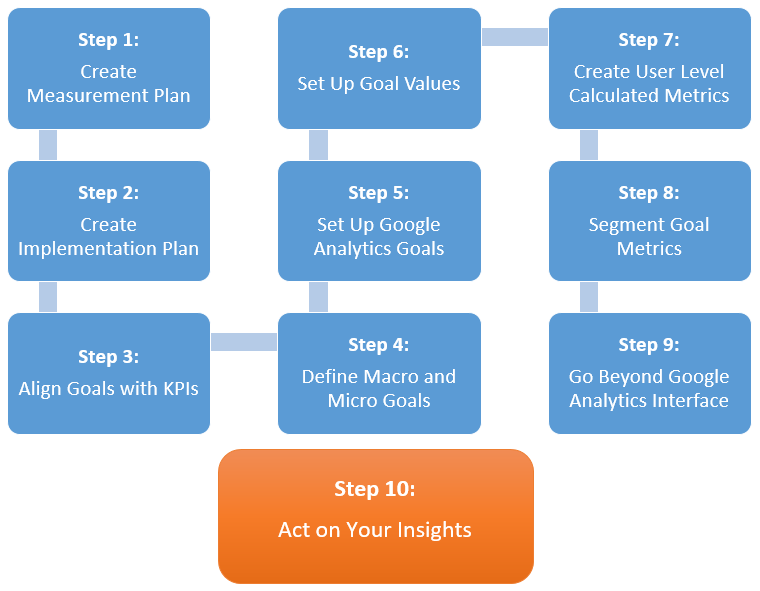Discovering What Data Is Google Analytics Goals Unable to Track
Discovering What Data Is Google Analytics Goals Unable to Track
Blog Article
Introducing the Blind Spots: Recognizing What Google Analytics Goals Can not Determine
In the world of electronic analytics, Google Analytics stands as an effective device for monitoring and analyzing on the internet customer communications. Understanding what Google Analytics goals can not measure is important for acquiring a detailed sight of user habits and interaction.
Individual Actions on External Platforms
Comprehending just how individuals engage on exterior platforms is vital for optimizing on the internet strategies. Outside platforms, such as social media sites networks, recommendation sites, and on-line forums, play a considerable duty in driving web traffic to a company's website. By assessing customer actions on these systems, services can acquire useful insights right into the efficiency of their advertising and marketing efforts and the choices of their target market.
One key aspect of user behavior on external platforms is the referral resource. By tracking where the users are coming from, companies can recognize which platforms are driving one of the most traffic to their web site. This information can assist firms allot their resources much more properly, focusing on the systems that produce the very best outcomes.

Offline Communications and conversions
Assessing user habits on external platforms offers valuable insights into on the internet approaches; however, taking into consideration offline conversions and interactions is just as important for a thorough understanding of a company's overall efficiency. Offline conversions, such as in-store acquisitions or phone queries, play a substantial duty in several services' success.

Attribution Beyond Last Click
When delving right into the world of digital marketing analytics, it comes to be important to look beyond the solitary touchpoint of the last click for a much more extensive understanding of acknowledgment. While Google Analytics offers beneficial understandings into individual habits, depending exclusively on last-click acknowledgment can be restricting - what data is google analytics goals unable to track. Acknowledgment models that surpass the last click use an extra nuanced sight of the customer trip, thinking about all the touchpoints that bring about a conversion
Acknowledgment past the last click permits marketers to designate credit report to various communications along the conversion path, giving a clearer photo of the effectiveness of various marketing networks. By checking out multi-touch attribution models such as linear, time degeneration, or position-based attribution, companies can much better assign their advertising budgets and optimize their techniques for maximum effect.
Comprehending the influence of each touchpoint in the conversion procedure is crucial for making notified decisions and making the most of ROI. By welcoming acknowledgment past the last click, services can acquire much deeper insights into customer behavior and customize their marketing efforts read more much more properly.
Cross-Device and Cross-Browser Tracking

In a similar way, cross-browser monitoring matches cross-device monitoring by capturing individual behavior as they switch over in between various web browsers. Comprehending exactly how individuals communicate with sites on different web browsers can assist marketing experts optimize their online experiences to make certain consistency and functionality across different systems.
Qualitative Information and Customer Intent
Recognizing individual intent through qualitative information evaluation is crucial for developing targeted electronic advertising and marketing strategies that reverberate with the demands and choices of the target market. Qualitative information supplies insights into the 'why' behind user activities, clarifying motivations, feelings, and choices that measurable data alone can not capture. By analyzing user responses, remarks, and communications, marketing professionals can discover important information concerning individual intent, enabling them to tailor their messaging, web content, and offerings to much better line up with what their audience is looking for.
Qualitative information likewise helps in recognizing the context in which individuals involve with an internet site or application. This contextual understanding allows online marketers to create even more customized and relevant experiences, inevitably driving greater check that interaction and conversion rates. By diving into user intent with qualitative information analysis, organizations can get a deeper understanding of their target market, resulting in extra reliable marketing methods that meet individuals' needs and assumptions.
Final Thought
Finally, Google Analytics objectives have restrictions in gauging user habits on exterior platforms, offline conversions, acknowledgment beyond last click, cross-browser and cross-device monitoring, and qualitative data associated to customer intent. what data is google analytics goals unable to track. It is very important for organizations to be aware of these unseen areas in order to supplement their data evaluation with various other tools and techniques to get a more extensive understanding of their target market and improve their general electronic marketing approaches
By analyzing customer actions on these platforms, companies can obtain valuable insights into the efficiency of their advertising and marketing initiatives and the preferences of their target audience.
Evaluating individual actions recommended you read on exterior systems gives valuable insights into online techniques; nevertheless, thinking about offline conversions and interactions is equally critical for a comprehensive understanding of a business's general performance.In digital advertising analytics, relocating past last-click acknowledgment to discover cross-device and cross-browser tracking is important for acquiring an alternative understanding of customer communications throughout different systems and gadgets. By examining individual comments, comments, and communications, marketers can reveal valuable details concerning individual intent, enabling them to tailor their messaging, content, and offerings to much better straighten with what their target market is looking for.
By delving into customer intent with qualitative data analysis, businesses can acquire a deeper understanding of their target audience, leading to more reliable marketing strategies that fulfill individuals' assumptions and requirements.
Report this page